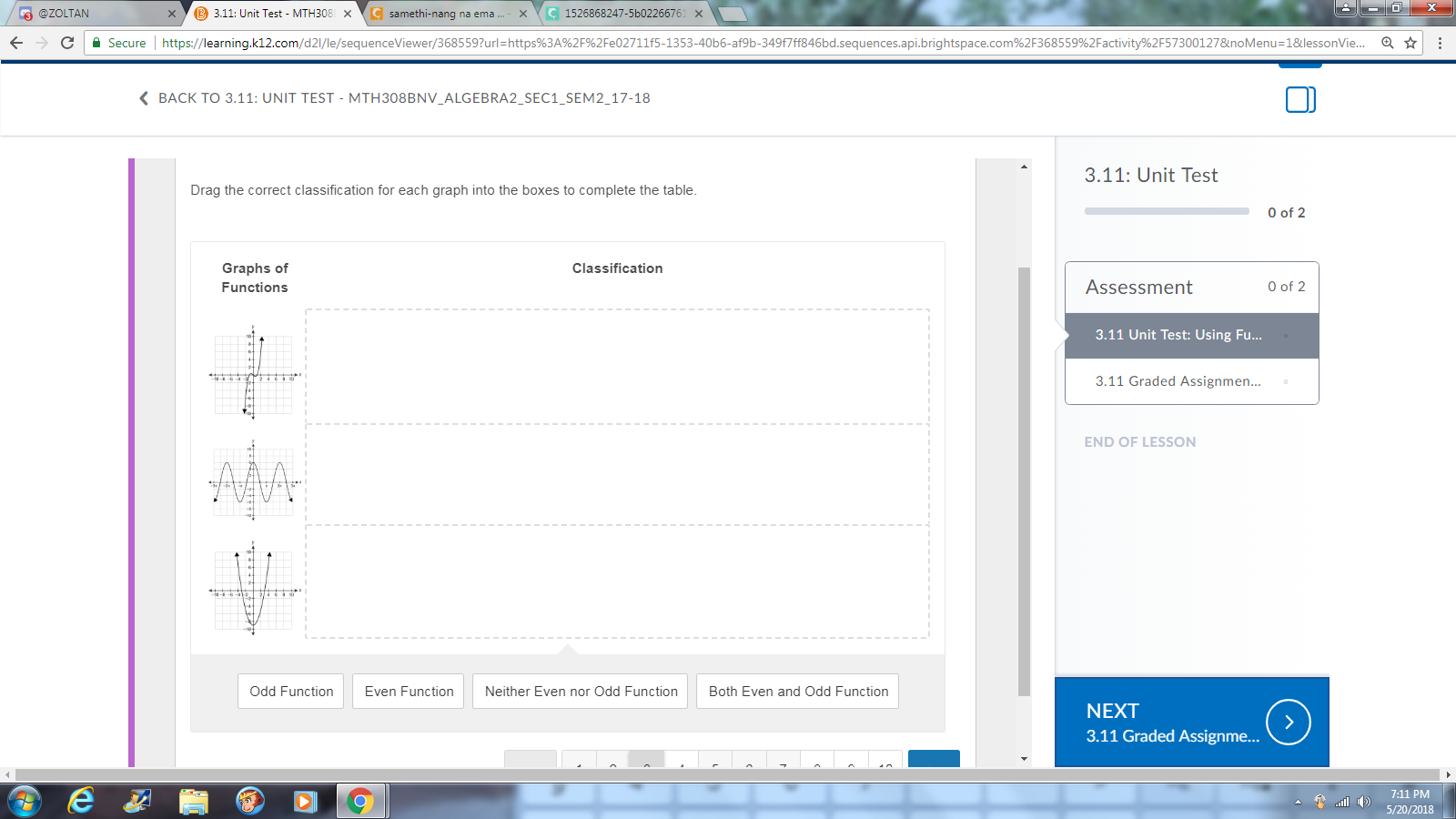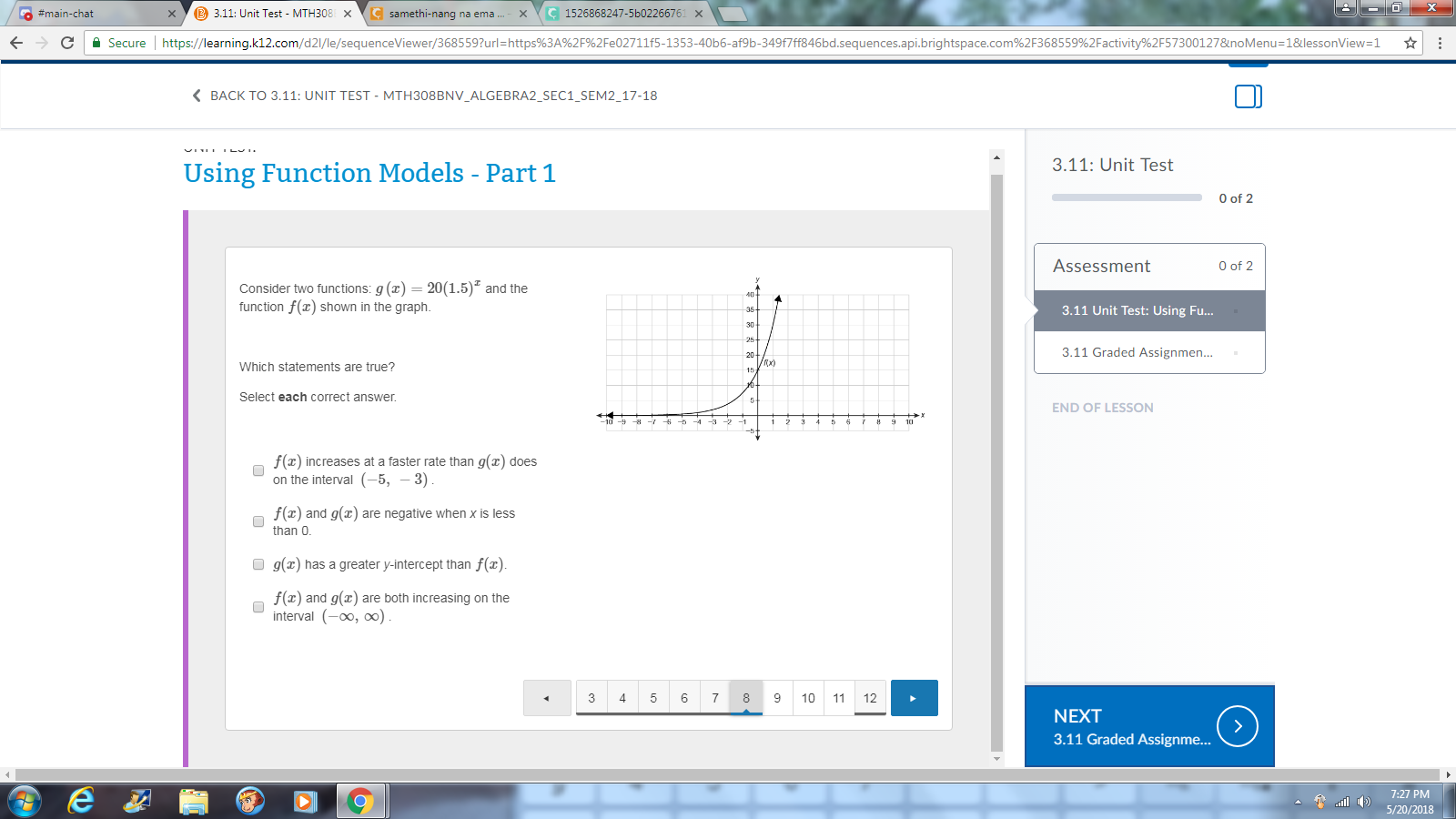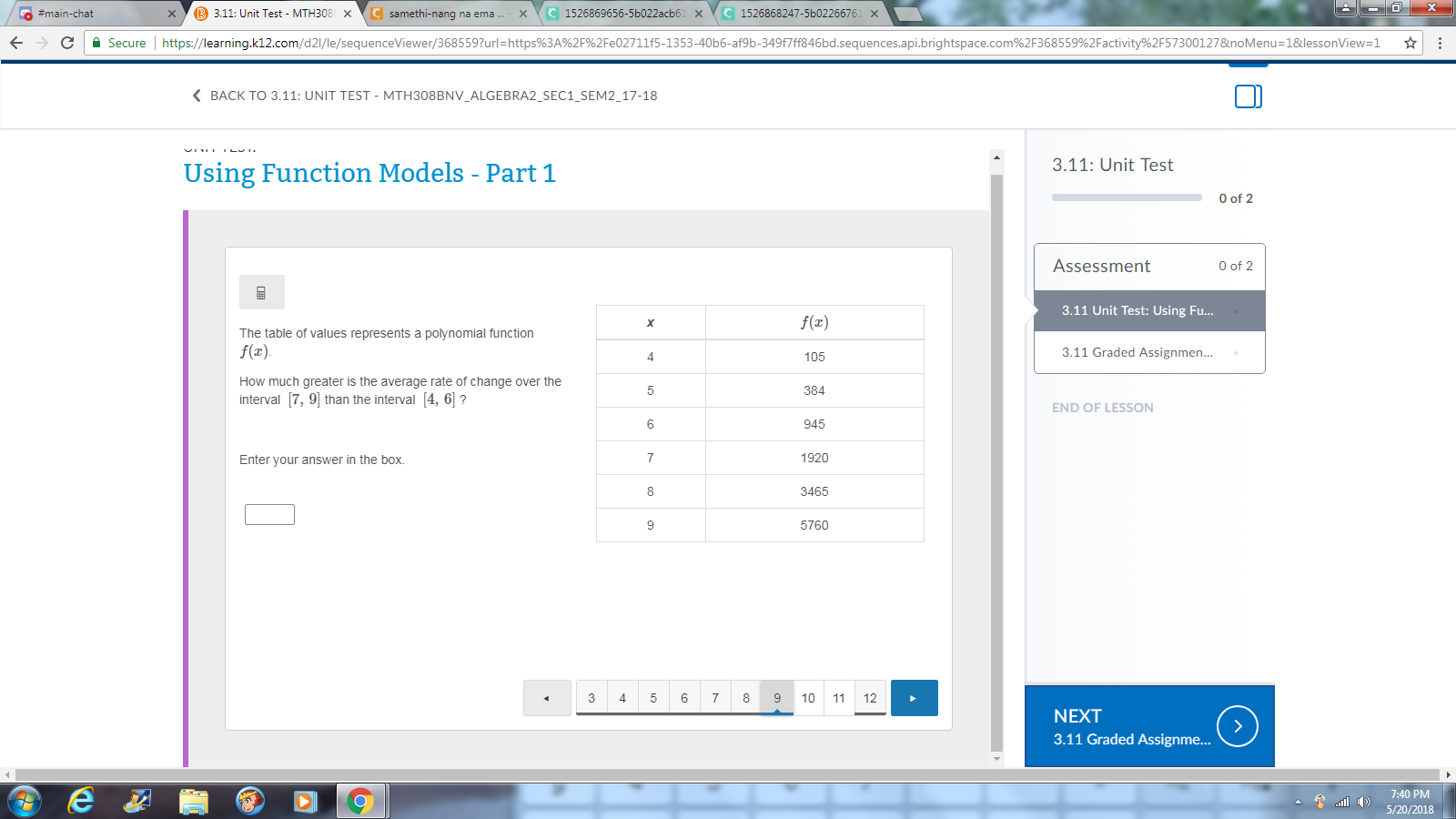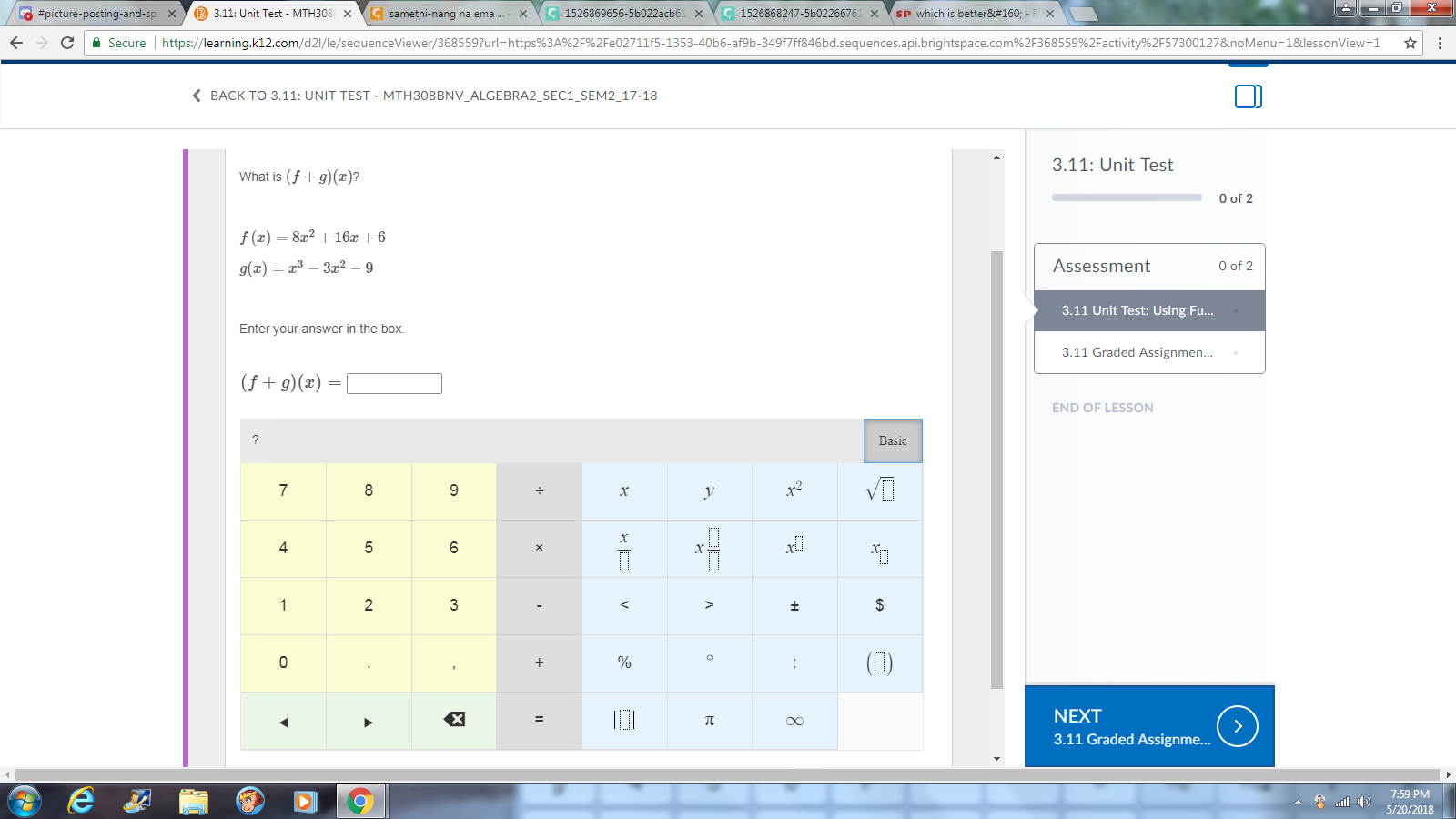samethi-nang na ema oog
@Angle
first graph: crosses the x-axis 3 times second graph: crosses the x-axis 6 times third graph: crosses the x-axis 2 times
okay, that means?
is 3 odd or even?
oh.
...
odd
so the other two are even
aye aye I'm assuming you get the idea? x'D
although
I might have made a mistake with the second one I think they mean that it keeps going up and down forever which would mean that it is not odd nor even because it crosses the x-axis infinitely many times
ok
what's your guess? |dw:1526869307330:dw|
C
|dw:1526869522713:dw|
D?
yup
|dw:1526869753397:dw|
that's the other graph they're talking about
alright
let's consider each option A: they want to look at the rates of each graph between x=-5 and x=-3 for f(x) the change is about 1 for g(x) the change is about 2 does "f(x) increase faster than g(x)"? B: they want to see if the graph is negative on the left side for f(x), x=-1 is about 8 which is positive for g(x), x=-1 is about 13 which is also positive are "f(x) and g(x) negative when x is less than 0"?
C: they want us to look at the y intercepts f(x), the y intercept is 15 g(x), the y intercept is 20 does "g(x) have a greater y intercept than f(x)"? D: are both graphs increasing?
for D, obviously yes
mhm :) yup
for C, is the graph you made G(x)?
yes
then C too
awesome ^_^
that it?
yes ^_^
for this, we just use the slope formula \(slope = \large \frac{y_2 - y_1}{x_2 - x_1}\)
so the first interval = \(\large \frac{5760 - 1920}{9-7}\) and the second interval = \(\large \frac{945-105}{6-4}\)
what do you get for each?
uh...
wait do i divide?
subtract first then divide
1741 for the first one
and 420 for the other
then the question is "how much greater" ?
wait... try the first one again?
I got 1920 for the first one
then 1920 - 420 = ?
1500
tah dahhh
maintainence starting soon ask a new question when we get back
back
ask a new question for your question? I gtg
@princeevee for your most recent unanswered question: (f+g)(x) = f(x) + g(x) you have been given that f(x) = 8x^2 + 16x + 6 and g(x) = x^3 - 3x^2 - 9 so f(x) + g(x) = (8x^2 + 16x + 6) + (x^3 - 3x^2 - 9) we then add like terms: = x^3 + (8x^2 - 3x^2) + 16x + (6 - 9) you should be able to get the answer from there, if you get stuck, still need help, or would like for us to check your answer, feel free to tag me or Angle Good luck! :-)
Join our real-time social learning platform and learn together with your friends!





